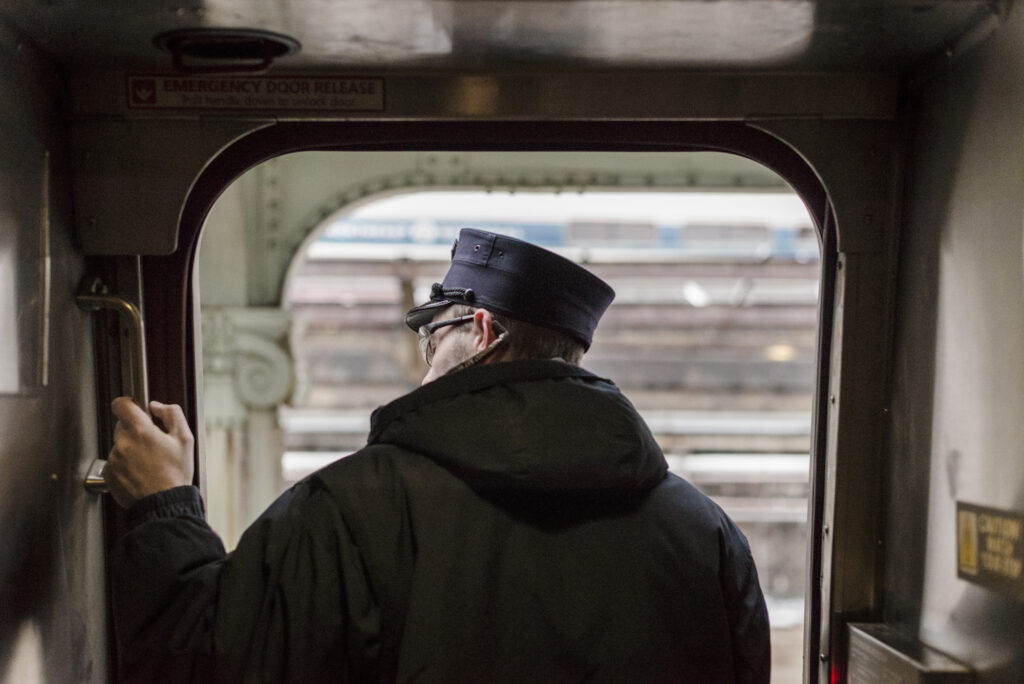As of 1964, cigarette smoke was recognized as a cause of many health problems, including lung cancer, cardiovascular disease, heart disease, stroke, and emphysema. By 1972, the Surgeon General published its first report that clearly identified secondhand smoke as a health risk, as well.
Secondhand smoke (also called environmental tobacco smoke or involuntary smoke) comes from a mixture of smoke that a burning cigarette emits alongside the smoke that is exhaled by a smoker into the surrounding air. Cigarettes are a main source of secondhand smoke, followed closely by pipes, cigars, and other tobacco products.

Railroad workers in enclosed locomotive cabs suffered years of exposures to a combination of diesel exhaust and secondhand smoke. Both of those exposures are known causes of lung cancer and bladder cancer.
Unfortunately, the railroads were slow to enact smoking bans and thus many railroad workers endured these exposures through the early 2000’s.
Secondhand smoke has been tied to multiple cancers and diseases in nonsmoking adults and children. The CDC has reported that nonsmokers who are exposed to secondhand smoke in their homes or workplaces have a 25-30% increased risk of getting lung cancer, and secondhand smoke causes more than 7,300 lung cancer deaths among U.S. nonsmokers every year.
Following the Surgeon General’s1972 report, several lawsuits were filed by nonsmokers suffering the consequences of exposure to secondhand smoke. The lawsuits were brought by flight attendants, bartenders, and industrial workers, including railroad workers, who were exposed to secondhand smoke on a daily basis.
In 1988, California implemented a ban on smoking aboard commercial intrastate airplanes, trains, and buses. New York’s Metropolitan Transportation Authority (MTA) banned smoking on all Long Island Rail Road and Metro-North Commuter Railroad trains around the same time. In 1990, smoking was banned on interstate buses (including Greyhound) and domestic airline flights of six hours or less, and Chicago’s Metra railroad banned smoking on all its trains.
In 1992, the U.S. Environmental Protection Agency (EPA) released a report classifying secondhand smoke as a Group A carcinogen—just as lethal as asbestos, plutonium and arsenic. According to the Massachusetts Department of Public Health, secondhand smoke contains over 4,000 chemicals, with at least 50 being known to cause cancer. Components of secondhand smoke include benzene, cadmium, formaldehyde, and acetaldehyde – all “known carcinogens.” Many of the same known carcinogens found in secondhand smoke can also be found in other common workplace exposures, including diesel exhaust and welding fumes.

When you combine secondhand smoke exposures with other workplace exposures, to substances like asbestos, silica sand or diesel exhaust, the exposed workers chances of being diagnosed with cancer becomes exponentially higher. One recent study found that when risk factors like cigarette smoke and asbestos are combined, the risk of developing lung cancer increases almost 37-fold, when compared to exposure to one risk factor. This is the precise reason why so many tradespeople who were exposed to multiple toxins, like asbestos, diesel exhaust and secondhand smoke, are being diagnosed with cancer.
Even with the abundance of information that proved secondhand smoke’s dangerous effects, several railroads were slow to react. For instance, smoking was banned on New York City subways in 1998, and CSX Transportation took until 1999 to prohibit smoking in all its locomotive cabs.
Amtrak’s Failure to Ban Smoking
Still, with other railroads taking notice regarding the dangers of secondhand smoke, and faced with clear-cut warnings from the Surgeon General, Amtrak was reluctant to ban smoking on its passenger trains. The reason? Banning smoking on its long routes would jeopardize its revenue. Following the banning of smoking on airplanes, Amtrak essentially chose to cater to travelers who smoked. In doing so, Amtrak knowingly exposed thousands of its On-Board Services employees to a “known carcinogen.” It took until 2004 – 32 years after the first Surgeon General report on secondhand smoke and years after all airplanes had banned smoking – for Amtrak to finally ban smoking in all its trains.
Secondhand Smoke Exposures
There is no safe level of exposure to secondhand smoke. If you suspect that your illness is related to secondhand smoke in your workplace, contact us today.
Sources:
https://www.cdc.gov/tobacco/secondhand-smoke/health.html
https://www.ajpmonline.org/article/S0749-3797(09)00154-8/pdf
https://tobaccocontrol.bmj.com/content/21/2/154.full
https://www.cdc.gov/tobacco/secondhand-smoke/
https://www.nap.edu/read/12649/chapter/7#114
TIMELINE of Secondhand Smoke Impact
1854-56
Cigarette popularity grows during the Crimean War.
1913
Camel brand is produced by R.J. Reynolds.
1950
Epidemiological studies report that lung cancer is particularly prevalent among cigarette smokers.
After the Report, concern began to focus upon the effects of tobacco smoke on non-smokers. This smoke is commonly referred to as Environmental Tobacco Smoke, or “ETS”. ETS has been the subject of extensive research in the public health community for decades.
1965
Federal Cigarette Labeling and Advertising Act is passed, requiring warning labels on all cigarette packages but not advertisements.
1971
Broadcast advertisements for cigarettes banned.
Surgeon General proposes a federal smoking ban in public places.
1972
Officials declare that airlines must create non-smoking sections.
1973
Arizona becomes the first state to restrict smoking in several public places.
1974
Connecticut becomes the first state to pass laws applying restrictions of smoking in restaurants.
1975
Surgeon General’s report issues further evidence regarding health effects from involuntary (passive) smoking, especially the relationship between parental smoking and the rates of bronchitis and pneumonia in children’s first year of life.
Minnesota passes a state-wide ban on smoking in public places.
1976
In July 1976, the ICC banned smoking in AMTRAK diners, and strictly prohibited cigar and pipe smoking in any car which was not designated a smoking car in its entirety.
1979
NIOSH issued CIB 31, Adverse Health Effects of Smoking and the Occupational
Environment, warning employers of “adverse health effects due to the combined actions of
tobacco use and exposure to chemical and physical agents in the workplace.”
1981
Insurers offer discounts on life insurance premiums to nonsmokers.
1986
Surgeon General’s Report stated that “involuntary smoking” is a cause of cancer in healthy nonsmokers. (secondhand smoke causes lung cancer)
1987
U.S. Department of Health and Human Services establishes a smoke-free environment in all its buildings, affecting over 120,000 employees.
1988
Government bans smoking on short domestic airline flights. (2 hours or less)
DELTA became the first airline to ban smoking on all worldwide flights.
1995
New York City, Maryland, California, and Vermont pass laws banning smoking in public places and/or workplaces.
1996
U.S. Department of Transportation reports that 80 percent of nonstop scheduled U.S. airline flights between the U.S. and foreign points will be smoke free by June 1.
1997
President Clinton signs an executive order banning smoking for federal employees and all members of public visiting federally owned facilities.
2000
Congressionally mandated smoking ban takes effect on all international flights departing from or arriving in the U.S.
2003
Dozens of U.S. airports are designated as smoke-free.
Connecticut, New York, Manie, Iowa, and New Hampshire pass laws designating certain public places to be smoke-free.
2004
Massachusetts and Rhode Island pass laws designating certain public places to be smoke-free.
2005
Illinois, Delaware, Washington, Montana, North Dakota, Georgia, Vermont, Maine, and Rhode Island pass laws banning smoking in public places and/or workplaces.
2006
The District of Columbia, Colorado, New Jersey, Utah, Arkansas, and Puerto Rico pass laws banning smoking in public places and/or workplaces.
Sources:
https://www.ncbi.nlm.nih.gov/books/NBK222369/ and https://www.ncbi.nlm.nih.gov/books/NBK44326/
https://law.justia.com/cases/federal/district-courts/FSupp2/169/755/2423980/

